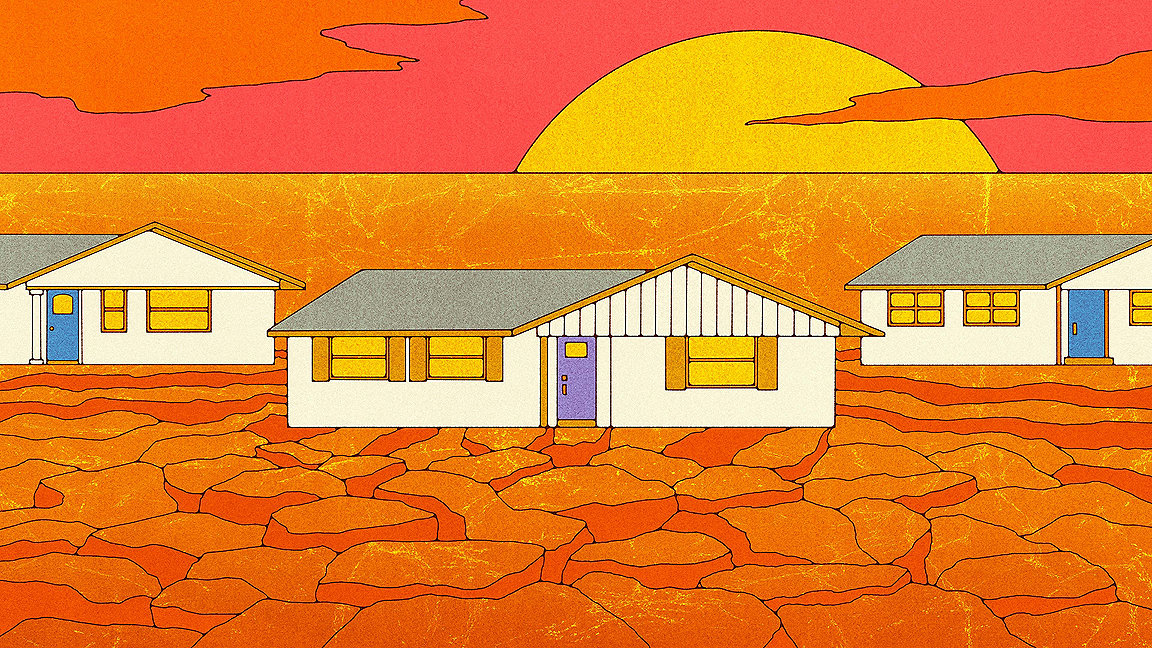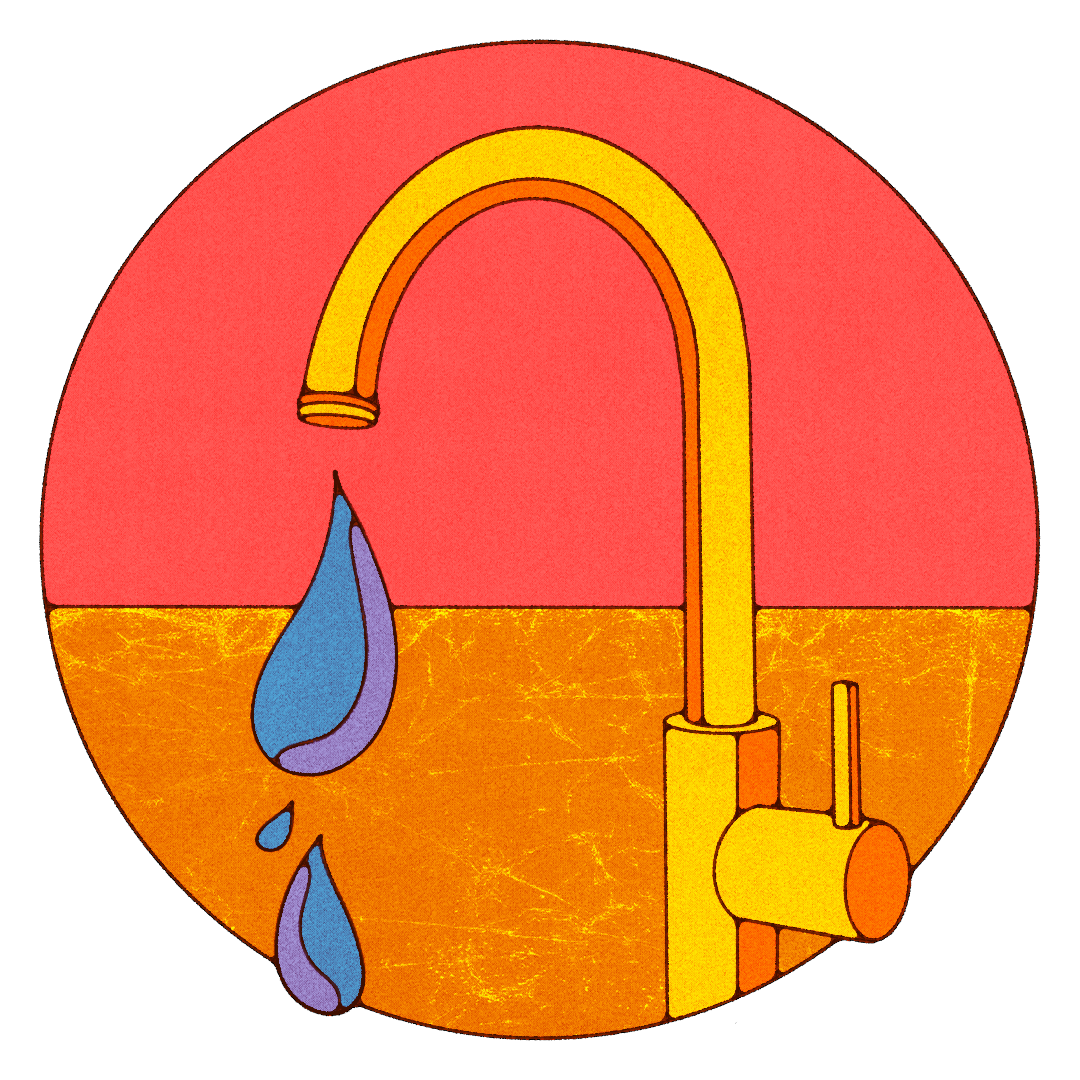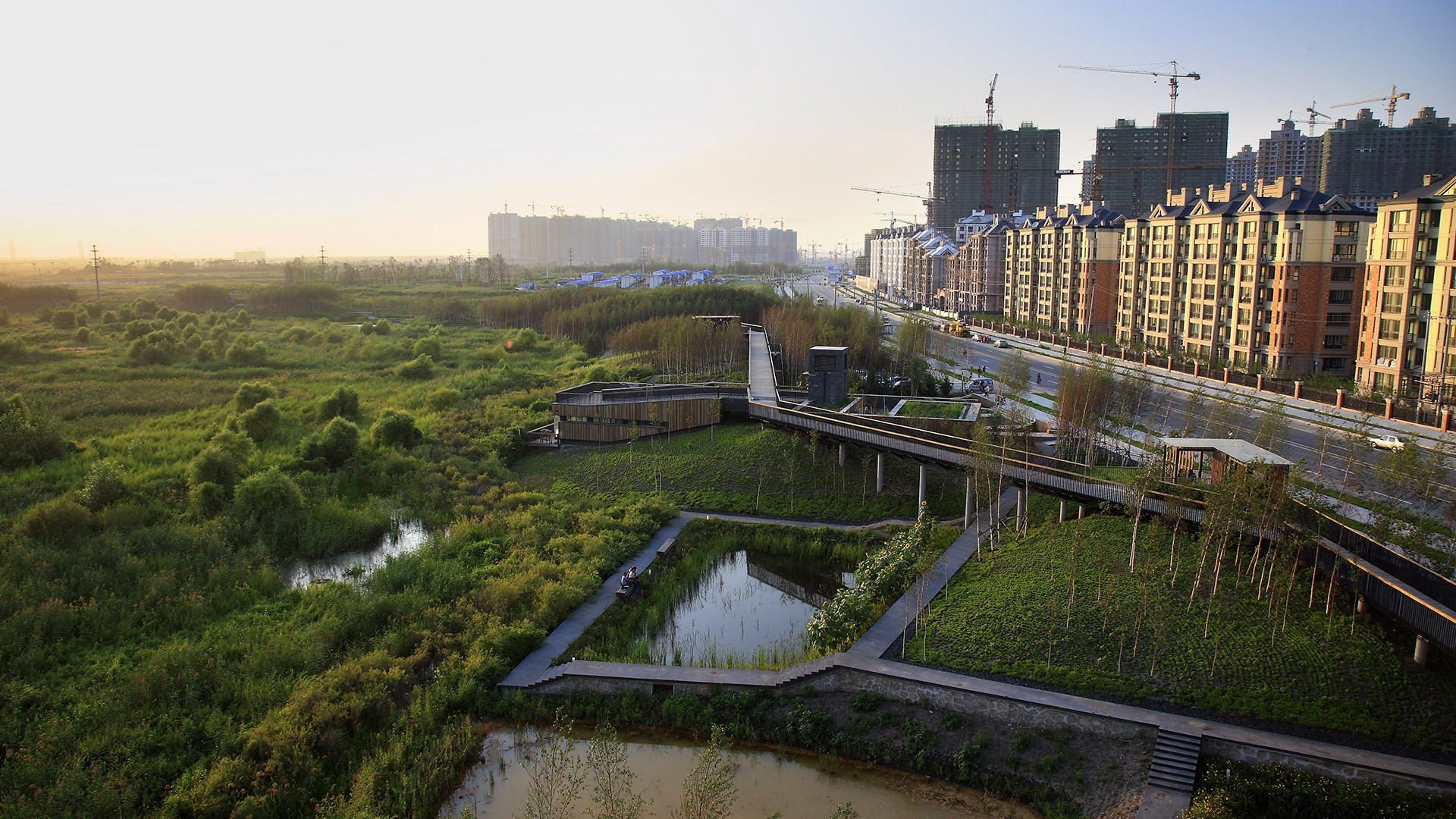
Illustration by Kate Dehler
It wasn’t unexpected, but it still came as a shock. On 1 January, residents of Rio Verde Foothills, Arizona, were told that the city of Scottsdale would stop supplying them with water, leaving around 500 households to fend for themselves.
For the foreseeable future, the community will have to pay for water to be trucked in from further afield, at around triple the cost by some estimates. In such circumstances, local people are deeply worried and many cannot understand why housebuilding continues in the area.
However, it isn’t actually Scottsdale’s responsibility to supply water to Rio Verde Foothills. “Rio Verde is a separate community governed by Maricopa County, not the City of Scottsdale,” the administration said in a statement.
“Scottsdale has warned and advised that it is not responsible for Rio Verde for many years, especially given the requirements of the city’s mandated drought plan. The city remains firm in that position, and confident it is on the right side of the law.” A judge in the Superior Court of Arizona recently ruled in Scottsdale’s favour too.
The statement will be of little comfort to the residents of Rio Verde Foothills, but it is representative of just how serious drought has become in Arizona. Indeed, it represents a microcosm of the situation facing millions of households in the western United States, according to the US Department of Agriculture’s (USDA) US Drought Monitor (USDM).
“As of 11 July 2022, drought conditions were most severe in the states of California, Texas, Oregon, Nevada, Utah, and New Mexico,” said the USDA at the height of drought season last summer. “According to the USDM, on 11 July more than 32% of land in western states was classified as experiencing extreme or exceptional drought.”
It added: “Data reported by the USDM demonstrates the incidence of drought in the western US during the summer of 2021 exceeded all past droughts in the region since 2000. Drought conditions in the western US gradually subsided in the latter months of 2021 and began intensifying again during the first half of 2022.”
More extreme weather
There is little doubt that climate change is to blame. One of the dreadful ironies of the climate crisis is that both severe flooding – as seen recently in Germany and Pakistan – and droughts are on the rise. The latter aren’t limited to the US, as an article in August 2022 by the World Economic Forum (WEF) points out.
In July 2022, the Italian government declared a state of emergency in five regions, describing the drought as the worst in 70 years. “There are two categories of causes for this water crisis,” Italy’s then prime minister Mario Draghi said in a statement. “One is the rainfall deficit of the last three years. The general rise in temperatures is also contributing; there is no doubt that climate change is having an effect.”
Last summer, France experienced the worst drought since records began in 1958, with water restrictions put in place across vast swathes of the country. Portugal recorded its hottest July since records began. Average temperatures reached 40oC, some three degrees above the average for the month. All in all, 99% of the country was in severe or extreme drought.
Even the famously rain-sodden British Isles didn’t escape the heat. Last summer, temperatures breached 40oC in the south-east for the first time, which led to the declaration of a drought. In turn that led to water being shipped down from the north of the country to prevent taps running dry, according to Margaret Read, director of policy at the National Infrastructure Commission (NIC).

“On 11 July more than 32% of land in western US states was classified as experiencing extreme or exceptional drought” US Drought Monitor
Pressure on water supplies
Part of the problem for the UK, not to mention the likes of Italy and California in the US, is that the worst of the recent droughts have taken place in areas where demand for more housing, as well as other development, is most acute. As a result, demand for water is going up at the same time as supply is dwindling.
Dr Nathan Richardson, head of policy and strategy at NGO Waterwise, says the situation is becoming acute. “We've got quite big parts of England that have lots of water stress,” he says. Pretty much everywhere from Devon, right across to the south-east and up to the Midlands is seriously water stressed. There are constraints on water availability in those places now and in the future. And obviously, there's development planned as well, so that that's putting more pressure on already stressed water availability.”
It’s a problem that the NIC is well aware of, even if the built environment sector as a whole hasn’t yet understood the necessity. Back in 2018, the NIC produced a substantial report on the matter, entitled Planning for a Dry Future. Among much else, the report estimated the costs involved in the water infrastructure required to deal with climate change. It found that the price tag of acting early came in at £21bn, compared to £40bn if nothing is done and the country builds reactively.
A big part of the plan the NIC proposed is around reducing consumption, which is largely driven by a public information campaign. However, it also addresses infrastructure across three key themes: a 50% reduction in leaks from pipes; further reductions in consumption through compulsory charging by volume; and then new bits of kit to increase supply.
“We put aside some money at the last review in 2019 – £69m to get 18 projects to construction ready stage,” says NIC’s Read. “By construction ready, we mean that projects have gone through the planning process and sorted out all the commercial arrangements and done all the procurements. The water companies have been working on that and that's all reflected in their new long-term plans.”
In formulating those plans, the water companies must consider for the need for more housing. “They are supposed to take account of housing growth in those plans, as well as the impacts of climate change,” says Read. “The idea is that they can get ahead of the need for housing supply and they should never be a block on growth.”
However, Read adds: “Whether that happens in practice is a different question. In some areas it works really well and there's good engagement between the water utility provider and the local planning authorities. In other areas it doesn't happen at all. It's very mixed.”
Planning for drier times
One UK city that is being proactive is Leicester. There, the council is finalising the next iteration of its local plan and, all being well, it will include a clause advocating for lower water use in new homes. “We are going to include an actual policy in our sustainable design and construction part of the local plan,” says Chryse Tinsley, landscape planner at Leicester City Council.
“And what we're arguing for is a maximum of 110 litres per person per day. To some degree, it is aspirational because how would you ever check it? But it is in there.”
In terms of the infrastructure required, plans include some new reservoirs, the UK’s second water recycling plant, as well infrastructure to allow for the transfer of water from the north and the west to the south-east. The latter is more complicated than you might think. “The thing about water is that it's really heavy,” says Read.
“It's going to cost a lot of money, as well as a lot of energy, to move it around. You’ve also got different chemical composition in different places. Water is quite a complicated thing. You have a lot of issues around mixing supplies from a drinking water quality perspective but also from an environmental perspective. It's not an easy thing to do, which is why it hasn't been attempted before.”
Given all those challenges, how confident is Read that the UK’s water supply will be secure in the decades to come? “If we don't take action, then we will be in a very, very difficult place in 2050,” she says. “But there is a framework in place and the water companies are developing infrastructure and working to reduce leakage and to reduce demand as well. If all those things work, then we will be fine. But that's quite a big if.”

“There is no doubt that climate change is having an effect” Italy’s former prime minister, Mario Draghi

